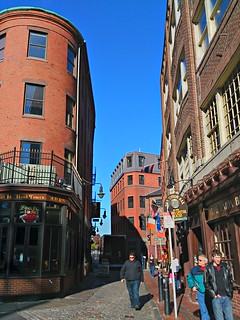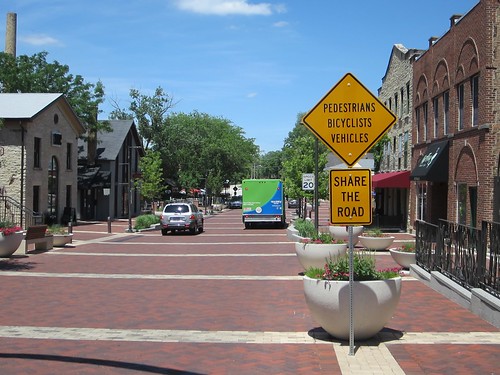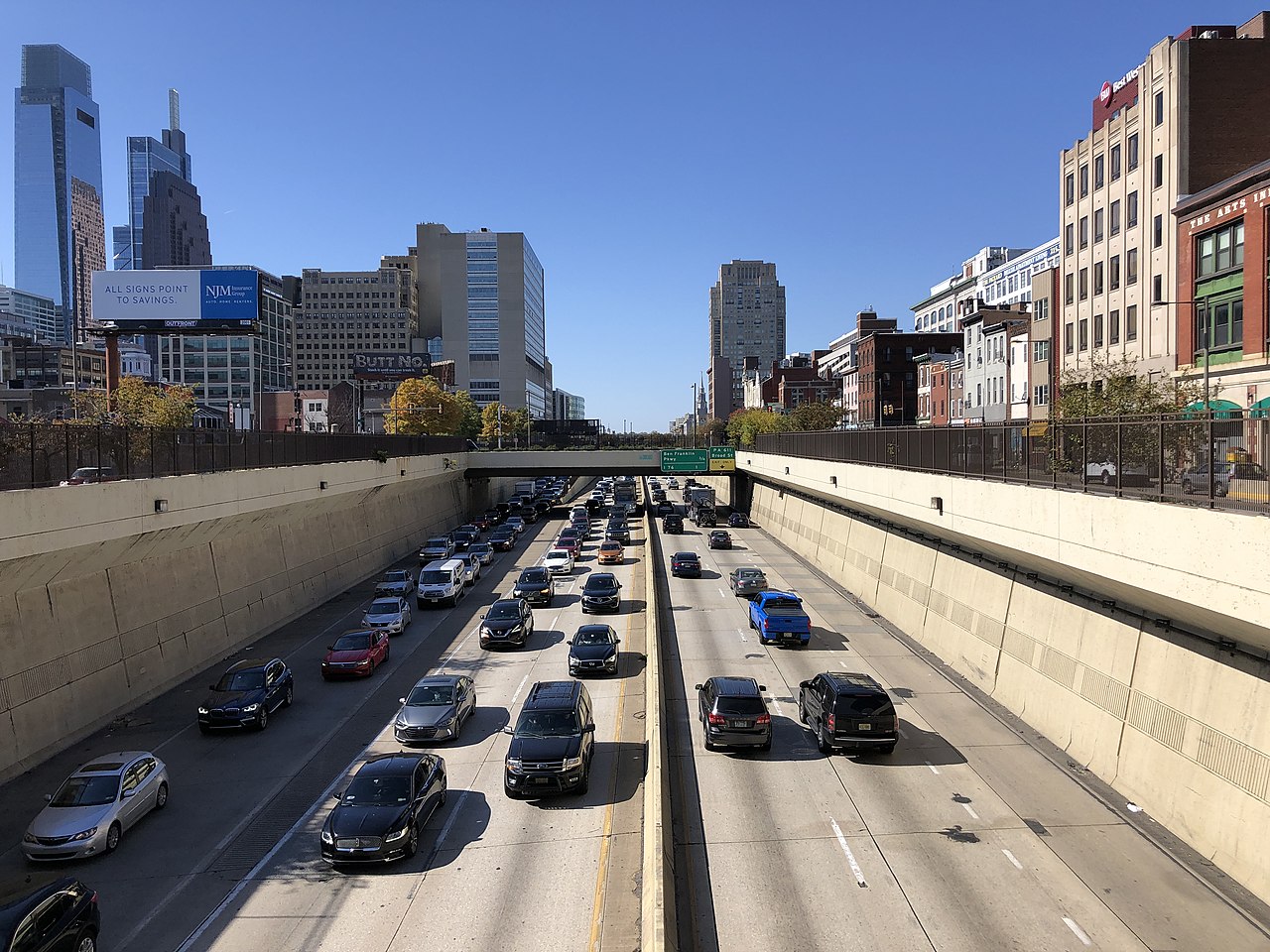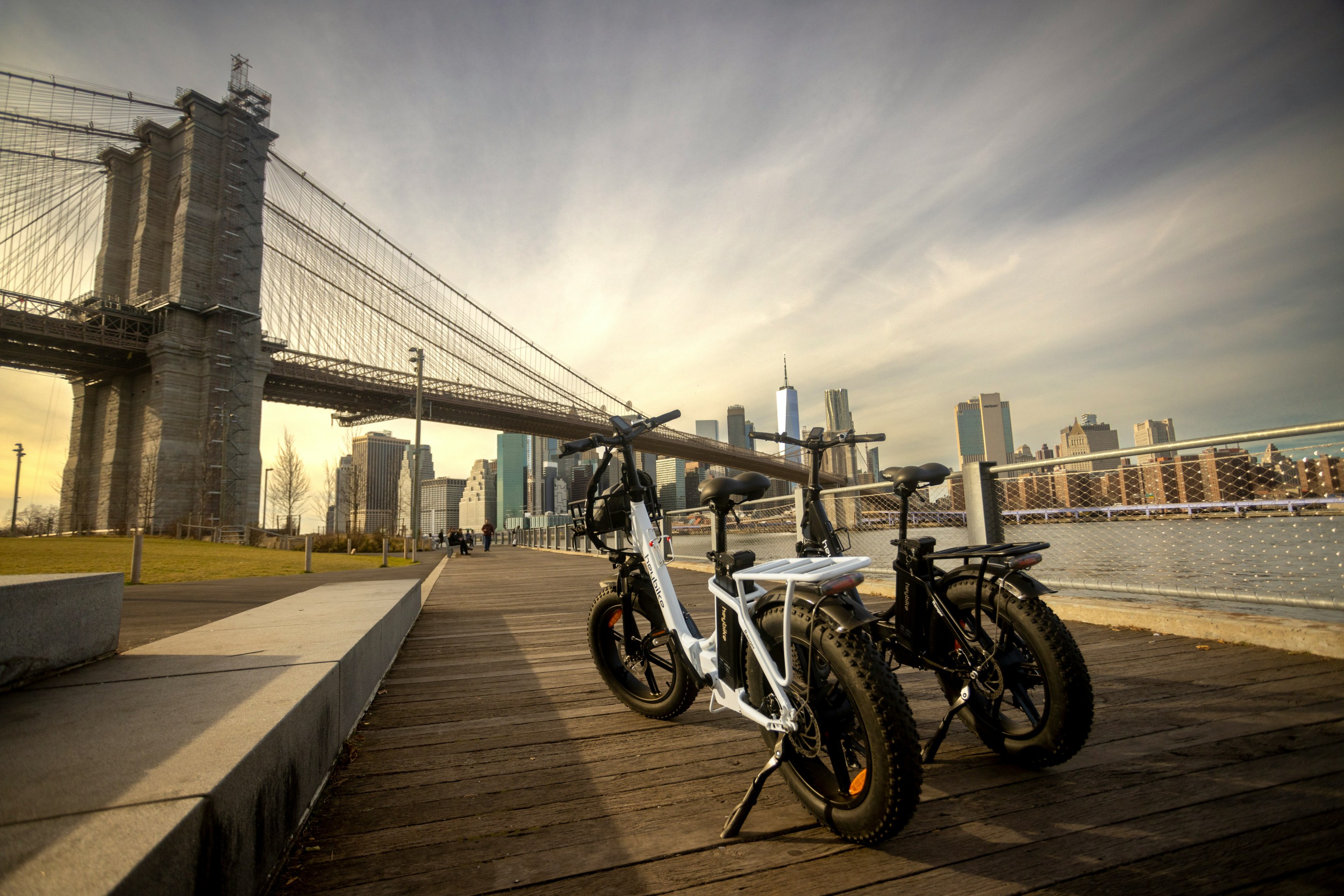
"Recovering architect" and street design expert Ben Hamilton-Baillie launched a broadside against the rules of traffic engineering during a plenary speech to the Congress for the New Urbanism's recent annual meeting in Buffalo. Baillie urges widespread adoption of "shared space" -- a design concept popularized by Hans Monderman over the past generation in the Netherlands that has only just begun to make headway in the United States.
Hamilton-Baillie argues that current street design practices unsuccessfully try to blend the concepts of highways and public space, through wide lanes, broad curves, and signs too numerous to count (much less read). The solution, he says, is to create a different set of expectations: "Don't treat drivers as idiots, because then you'll get idiots." Instead of relying on an endless set of instructions, he suggests that humans instinctively understand how to move through public space.

That instinctive understanding worked on city streets for thousands of years, and was upended by cars less than a century ago. Hamilton-Baillie points to the experience of ultra-Orthodox Jews in Bnei-Brak, Israel, whose religious traditions extend to their understanding of how streets work. As researcher Tova Rosenbloom observed, "Drivers who get to Bnei-Brak complain that they need seven eyes. People walk on the roads as if they were footpaths."
Once drivers have been jarred into understanding that the post-1920s order of the roads no longer applies, streets can function as they have for millennia. Hamilton-Baillie insists that the cultural context matters less than one might expect: "Human social behavior is the same" across cultures, he says. "Shared space builds on that wonderful civility and those social gestures with which humans are blessed." Nor does he think there's a substantial trans-Atlantic divide: "European Union shared space research could find no difference in applicability across cultures. People are the same all over the world… American drivers are not necessarily less aware or alert."
Hamilton-Baillie cites ice rinks as a present-day example of spontaneous, "remarkable adaptation." A typical American ice rink features crowds of poorly-behaved teenagers, many quite unsure of their footing, all wielding blades on their feet -- and yet people rarely crash with serious consequences. The slow speeds are one factor, but Hamilton-Baillie argues that equally important is that the ice rink is a deliberately defined space. Numerous subtle cues instruct people to be careful even before arriving, from the wobbly walk to the rink to the gate you have to surmount before getting on the ice.
Besides ice rinks, most everyday environments exert powerful influences on our behavior. Hamilton-Baillie points out that "there's no law against farting in church, but you just don't do it." Our homes have a similar effect, he says. Once you enter "the front door, your behavior changes. You become very aware of the host's circumstances, the way they decorate their room. Your living room immediately tells me whether I can smoke or not," for instance.
One key to all of these spaces is that the entry threshold tells people they are crossing into a different realm. Streets that use a shared space approach need strong gateways at their edges, and distinctive surfaces within, which all instruct drivers that a different set of rules and expectations apply. Hamilton-Baillie urges "clear transition points," with vertical elements that visually narrow the space. On the surface, changes to pavement color and texture can demarcate or blur boundaries where necessary to encourage or discourage people from crossing lines.
These distinctive design treatments signal to people passing through the shared space that they will need to slow down and look around. As such, shared space has been a huge boon to economic development whenever it's been introduced to a retail district -- most famously to Poynton in the United Kingdom, featured in the video above. Hamilton-Baillie says that shared space has unparalleled placemaking ability, and that its biggest local proponents "typically tend to be people who understand the economic necessity of changing how a town relates to traffic." Streets through cities and towns are places of exchange, not just through-routes, and "once people understand how important economic and social exchanges are to life in a place, then people get enthusiastic about tackling traffic," he says.
Yet shared space does not involve compromising a street's ability to handle through traffic, either. "The capacity of the road improves," says Hamilton-Baillie. In all of his previous projects, not only have traffic volumes recovered to earlier levels, but average speed, throughput, local spending, and safety have all increased. The key difference is to remove time-wasting traffic controls like stoplights. These also systematically waste carrying capacity, by leaving huge swathes of the street empty for half the time.
Even though American engineering codes largely choose to treat drivers as idiots on highways, the shared space concept hangs on in places that were largely built in the pre-highway era. Massachusetts, in particular, is home to what John Massengale, co-author of Street Design and another panelist at CNU, called "probably the worst jaywalkers in the world." He continued, "and since jaywalking times infinity equals shared space," it's not surprising that Massachusetts has both informal and codified examples of shared space.
In historic towns like Provincetown, or in old city neighborhoods like Haymarket in Boston, both Massachusetts locals and tourists happily walk in the middle of the street. In Cambridge, city regulations [PDF, sec. 9.29] specifically define "shared streets" as those where vehicles must yield to pedestrians, use caution, and obey a 10 mph speed limit. The city has rebuilt a few narrow streets with shared space, which greatly expands the area available for pedestrians and street trees. (For his part, Hamilton-Baillie takes umbrage at Cambridge's terminology: "'Shared street' is a tautology, as it's hard to imagine an unshared street," he says.)

Earlier this week, John Greenfield reported on the River Street shared space in Batavia, Illinois, at Streetsblog Chicago. Stay tuned for more shared space coverage on Streetsblog USA and Streetsblog NYC later today. Next week, I'll report on a 12-block redevelopment on Washington, D.C.'s waterfront without a single curb on site.





